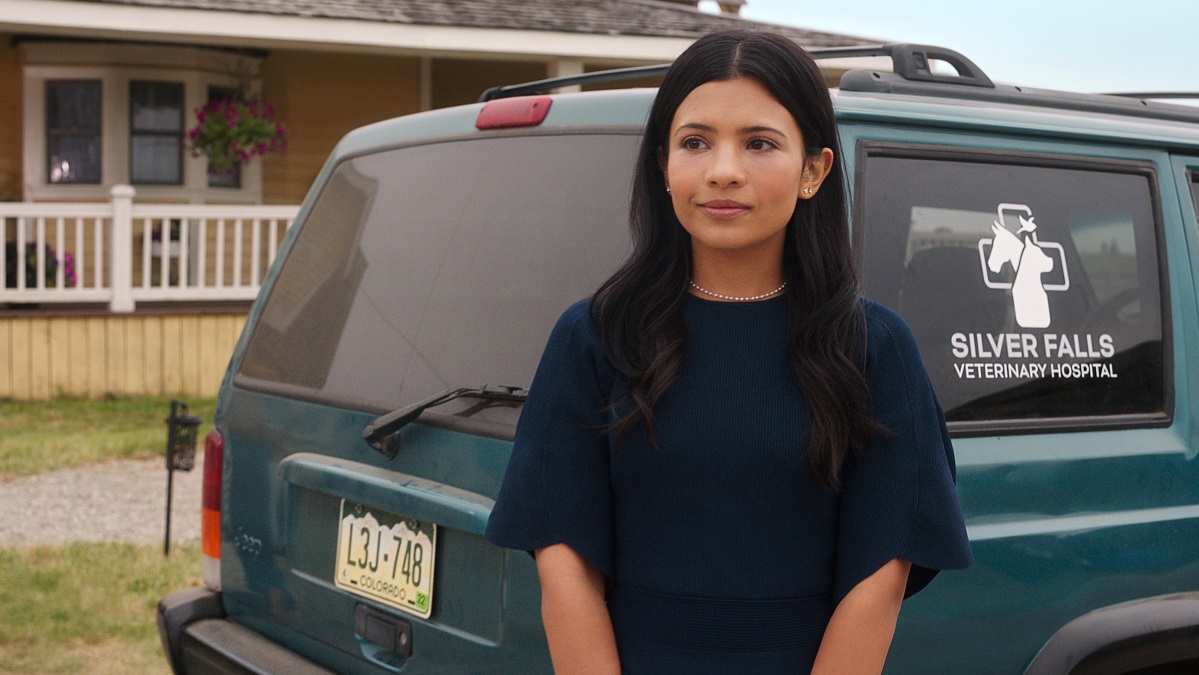Inside the redesign that will make you actually want to use Nextdoor
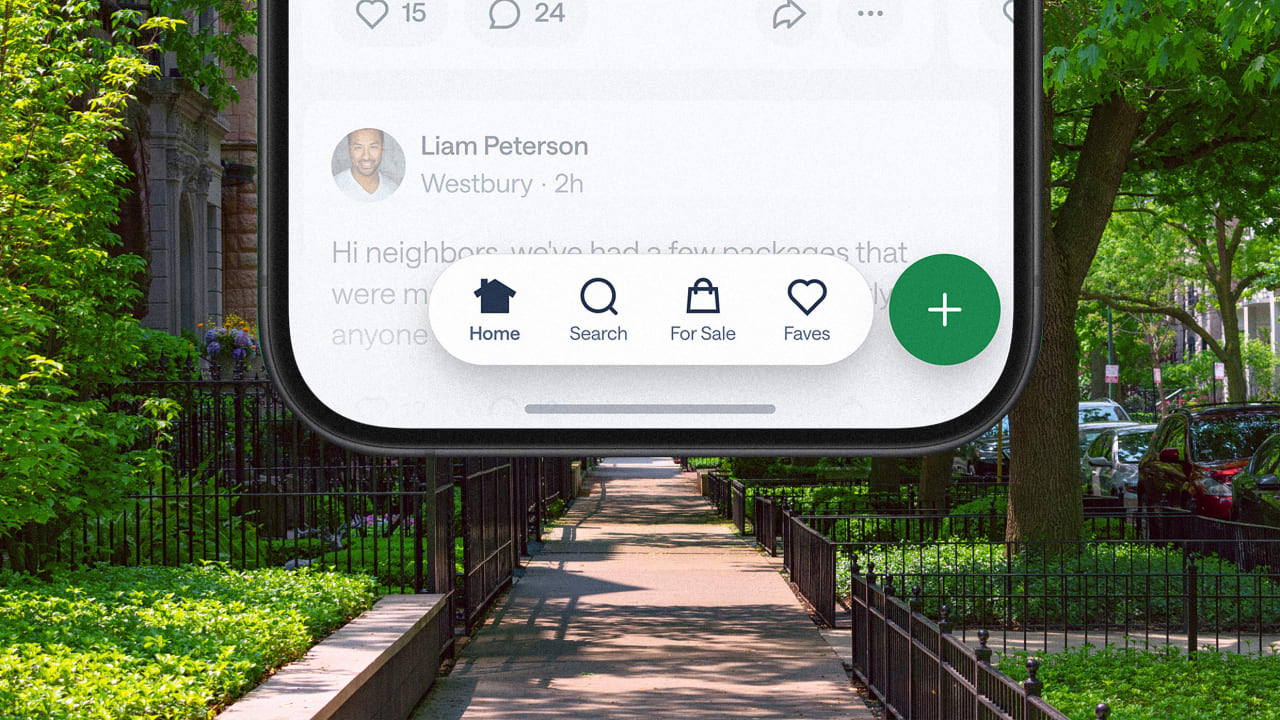
Of all the social media platforms chasing users and flooding the internet with content, Nextdoor has always been a bit of an oddball. Rather than offering Instagram-style influence or Twitter-style followers or even Facebook-style endless engagement, Nextdoor has been focused on the earnest goal of connecting neighbors with each other.
Since its founding in 2011, Nextdoor’s purpose has been to be the digital window through which people can better interact with their own neighbors and neighborhoods, online and in real life.
Today, Nextdoor is relaunching and unveiling a comprehensive redesign that positions it to actually make that possible.
The new Nextdoor is moving away from its message-board past toward a more informative offering of geographically relevant real-time alerts, local news from vetted publishers, and a more accessible pool of neighborhood knowledge undergirded by artificial intelligence. The type of stuff you may have seen on Nextdoor over the past 14 years—notices about lost or found pets, questions about whether or not anyone else’s power is out, that cranky neighbor who posts a bit too often—will largely be replaced by a feed of information that prioritizes relevance and utility.
It’s the first major update to the platform since its founding. Internally, Nextdoor executives are calling this a relaunch of both the product and the company as a whole.
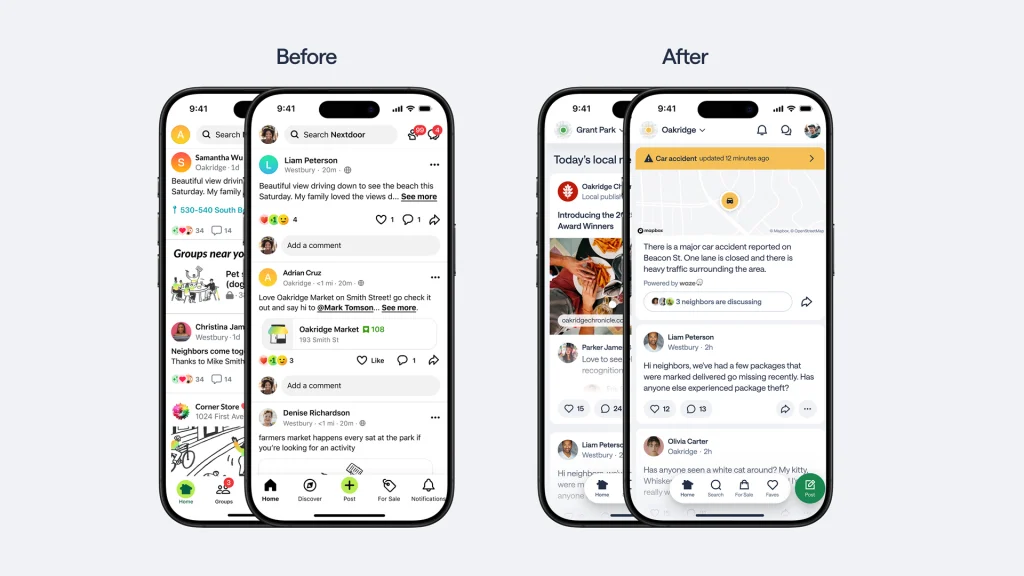
Founder returns
The relaunch of Nextdoor has been in the works since last fall, a few months after founder Nirav Tolia returned to the role of CEO after five years away from the day-to-day operations of the company. Tolia tells Fast Company that he came back to Nextdoor with a renewed enthusiasm for its mission of connecting neighbors, but also a clearer view of how the platform had struggled to meet its main goal.
“The potential of the Nextdoor idea had not been realized by the existing product,” Tolia says. “And the reason for that is that it’s a very hard problem. Local word of mouth, which is really what Nextdoor is all about, is one of the last things remaining to be digitized.”
That challenge hasn’t stopped Nextdoor from continuing to grow, however. According to the company’s end-of-2024 report, weekly active users of the platform grew 10% year over year, to 46.1 million in the fourth quarter, and the company made $247.3 million in revenue in 2024, up 13% from 2023. Despite these positive numbers, Tolia sees room for improvement. Others see the relaunch as a defining moment for the company . . . and a gamble.
“Our biggest challenge with the existing Nextdoor is that the content is not high-quality enough, it’s not timely enough, and it’s not comprehensive enough,” Tolia says. That’s led the company to move away from solely user-generated content to more of a user-augmented content approach, supported by geotargeted news and alert feeds from credible outside sources. For the relaunch, Nextdoor has partnered with 3,500 news outlets to provide feeds of local news, and the platform will also automatically load real-time alerts from more than 5,000 local public safety, emergency, and utility agencies.
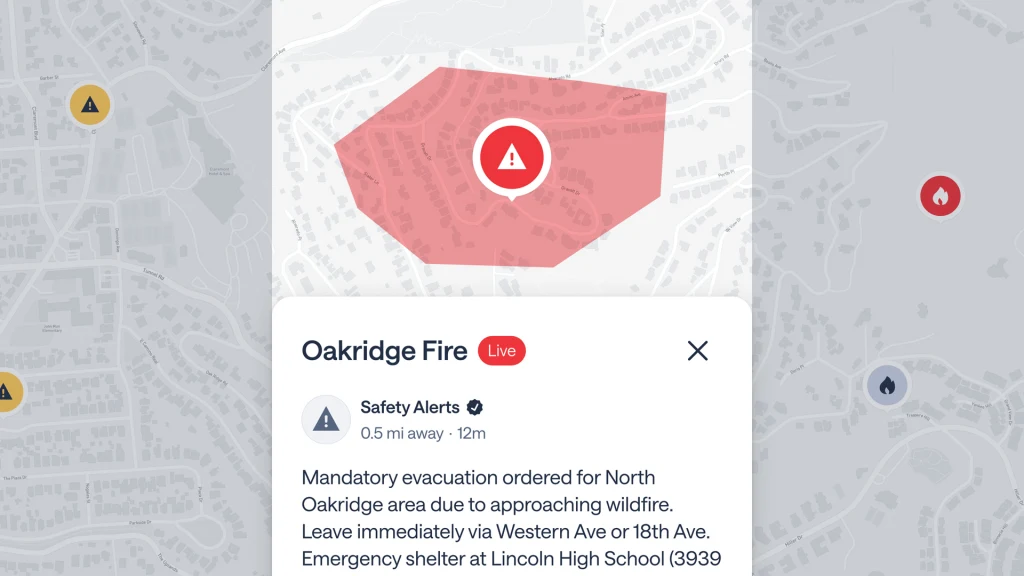
It’s also integrating AI into one of the more quintessential parts of the Nextdoor experience, which is neighbors seeking or providing information about local services, businesses, and events. The new AI-backed search feature draws from 14 years’ worth of posts to answer user questions on things like restaurant recommendations, contractors, and family-friendly activities. Rather than just asking a question in the form of a post and hoping for a useful response, users can ask their question in the search field and get instant results.
Speeding up this feedback loop is a key part of making Nextdoor more useful to people, Tolia says. Combining neighborhood knowledge and word-of-mouth recommendations with vetted information about news and local events could make Nextdoor into what Tolia calls a “first-screen app.”
New user experience, new user behavior
A change this big requires users to shift how they interact with Nextdoor. Ahead of the relaunch project getting started, Tolia hired Georg Petschnigg as Nextdoor’s chief design officer. A seasoned user experience designer, Petschnigg is best known for his time as head of product design at The New York Times, where he led a comprehensive redesign of the newspaper’s app. For Nextdoor, he’s bringing a news-centric sensibility and a focus on getting people the information they want as quickly as possible.
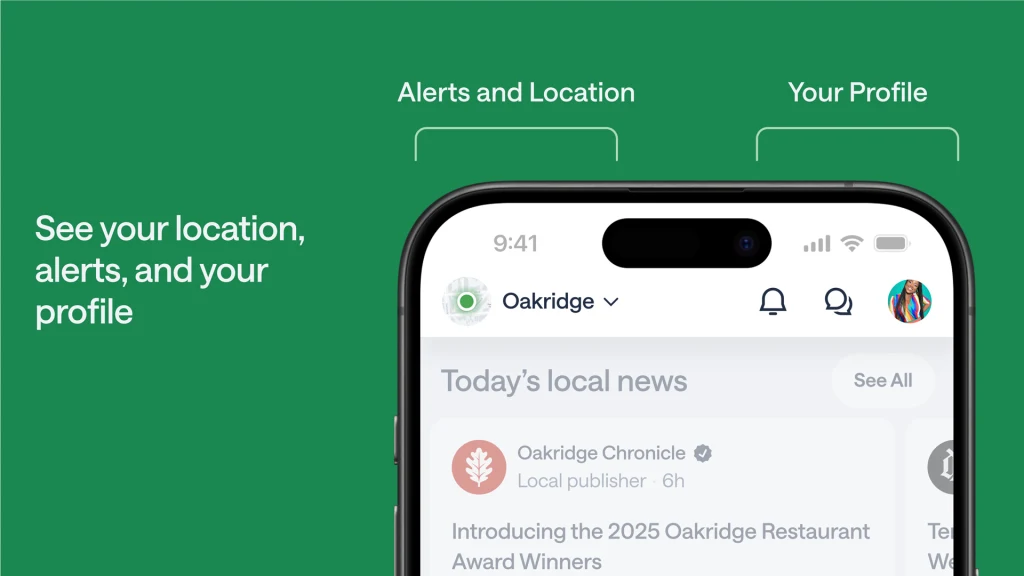
Given Nextdoor’s focus on neighborhoods, the main entry point for content on the platform is the user’s location, which gets prominent placement in the top-left corner of the new Nextdoor app. “The most important thing we want to signal is that this is about your neighborhood,” Petschnigg says.
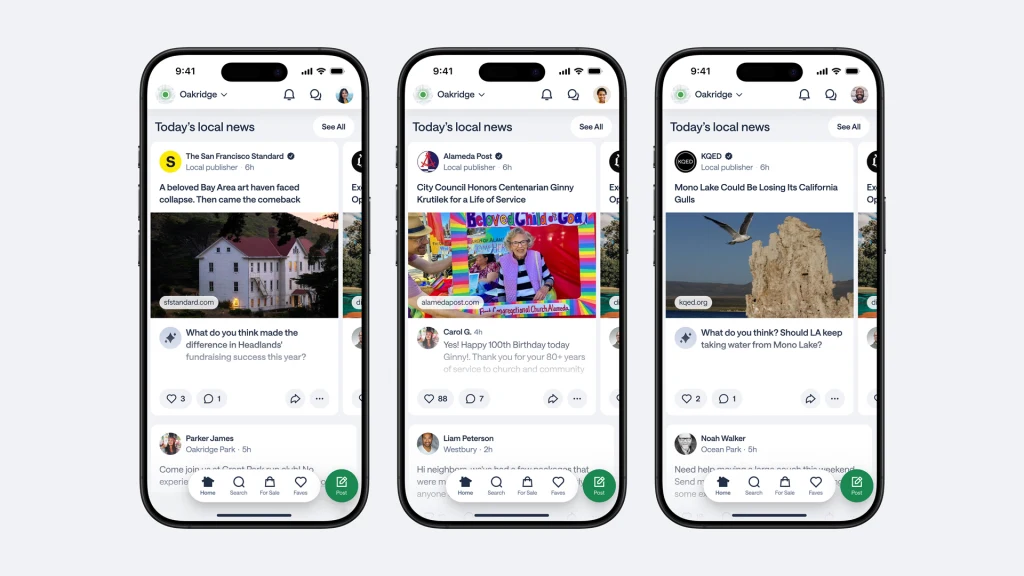
A tap in that upper-left corner takes users to a neighborhood map, which displays real-time alerts in the area, including extreme weather, fires, power outages, and police activity. If something important is happening that directly affects a user or their location, like a public safety emergency or a power outage, that information will be displayed automatically on a user’s home screen.
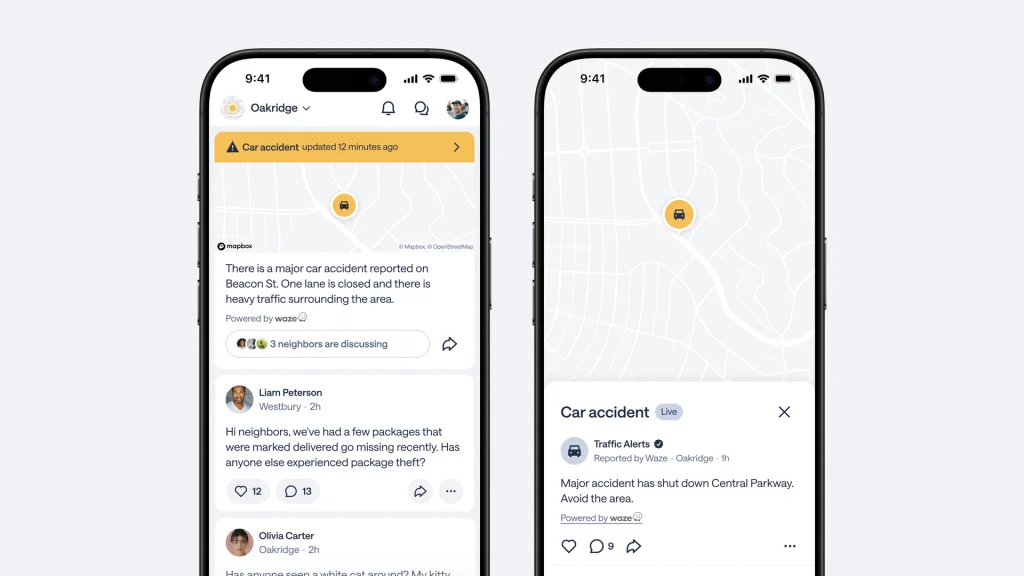
Other times, the home screen will be a mix of local news and posts from neighbors, all geotargeted for specific relevance in a given location. “Up until now, neighbors had to report on what’s happening, and they will do that,” Petschnigg says. “But being able to bring in these verified information sources really supercharges the dynamic on the platform.”
To spur active engagement, users can comment on the news items in this main feed. To try to avoid the cesspool that user comments sections can become, Nextdoor is using AI to create prompt questions that direct users to add their own reactions or information about the news shown in the feed. “We want to encourage the habit to discuss the news or advance the news,” Petschnigg says.
It’s unusual for a design to put news and user commentary all on the same level, Petschnigg says, but he’s hoping the focus on new stories that are relevant to a given neighborhood will become a starting point for deeper information sharing. “We’re hearing people saying they are interested in the news, but also that the conversation around the news is important,” he adds. “Framing news as information that exists to serve a community is really, really important, and we want to do that right off the bat.”
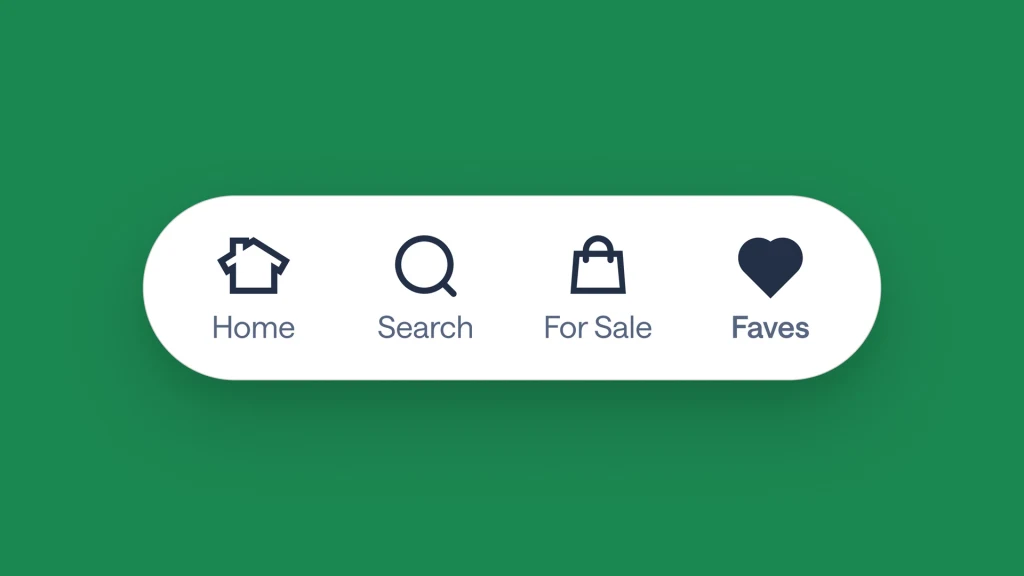
The other parts of the relaunched Nextdoor platform can be accessed by a simple floating navigation area at the bottom of the screen—an approach that’s the basis of Apple’s recently announced Liquid Glass user interface. Petschnigg says Nextdoor’s UX was in the works long before Apple made this reveal, but the similarities are validating. “We started understanding that if you want to have a user interface that lets the content breathe, you need to pare back the footprint of your navigational elements,” he says.
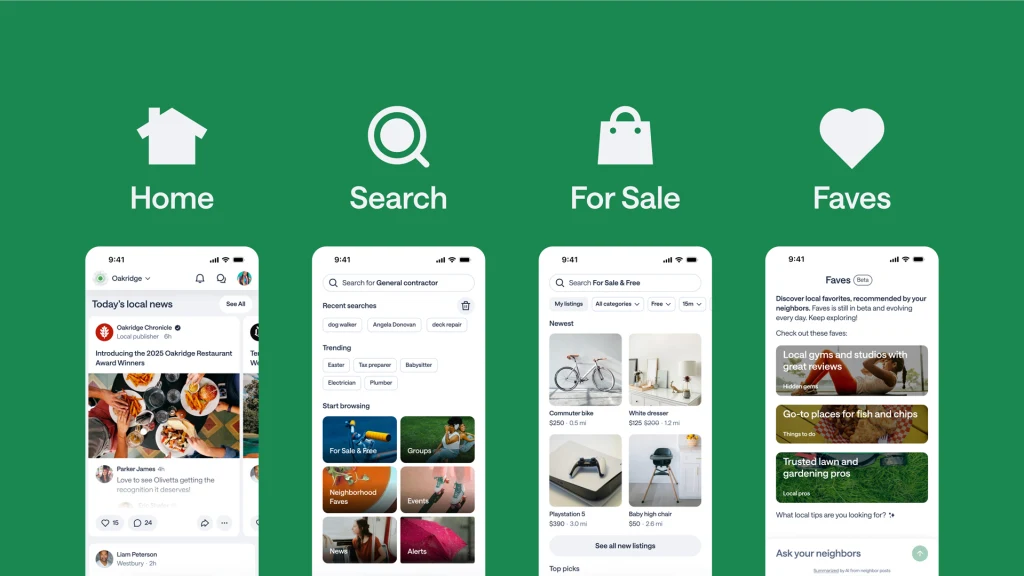
The floating navigation bar makes the home screen and its news feed, the search function, and local recommendations (or “faves”) the three most important parts of the new Nextdoor. This user interface, and the platform’s emphasis on bringing in reliable and vetted information sources, will redirect Nextdoor from being a free-for-all message board into something more deliberately informative.
Focusing on the local—through alerts, geotargeted news, and an AI-assisted knowledge bank—is the way Tolia thinks Nextdoor can stand out from other social media platforms. “There are only about a dozen apps that we rely on every single day. The fact that none of those dozen apps is related to our local life is just kind of mind-boggling to me,” Tolia says. “Given that 30% of Americans are now working from home, where we live is more important than it’s ever been. So I think our opportunity is bigger than it’s ever been as well.”
What's Your Reaction?
 Like
0
Like
0
 Dislike
0
Dislike
0
 Love
0
Love
0
 Funny
0
Funny
0
 Angry
0
Angry
0
 Sad
0
Sad
0
 Wow
0
Wow
0











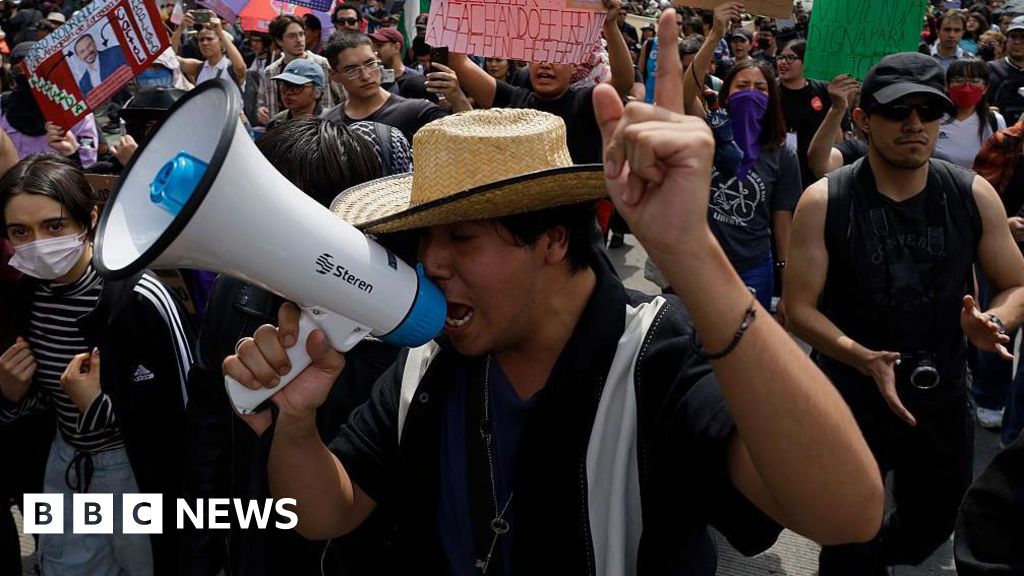





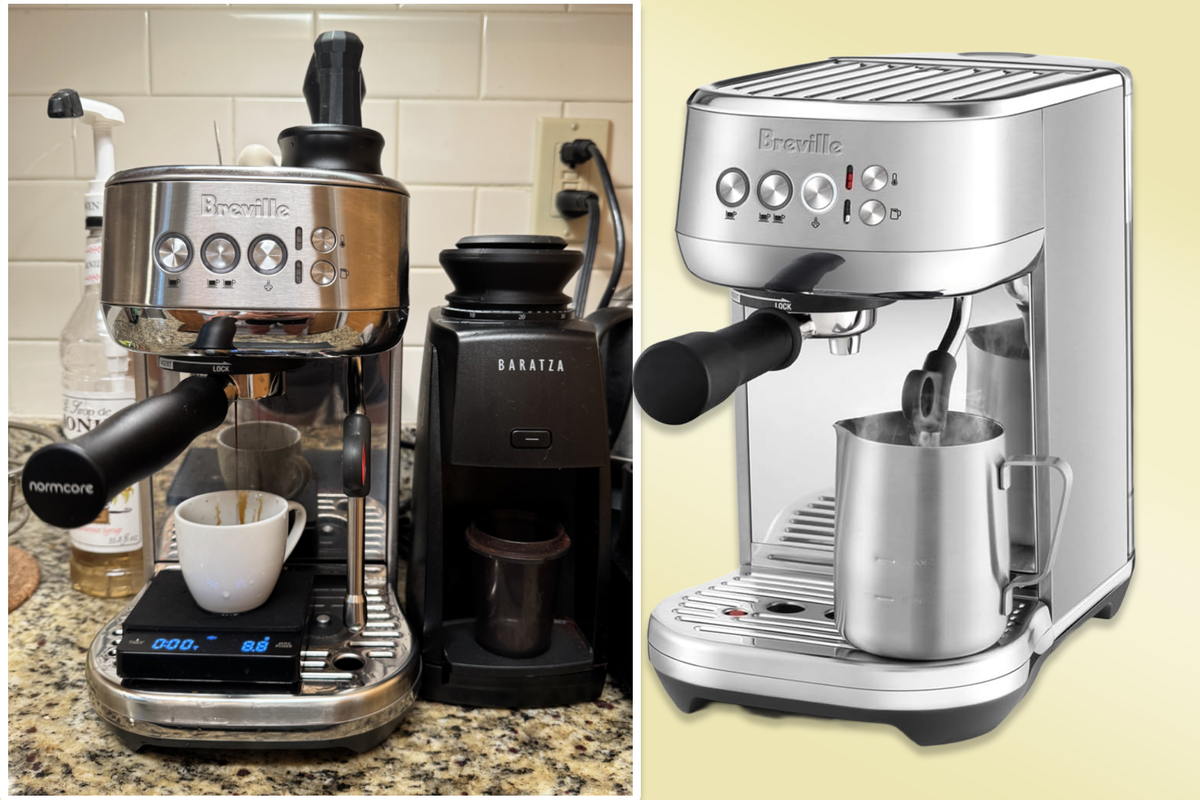

































![Øyunn finds "New Life" in latest single [Music Video]](https://earmilk.com/wp-content/uploads/2025/08/oyunn-800x379.png)





